Using Ink in Sketching, Drawing & Painting
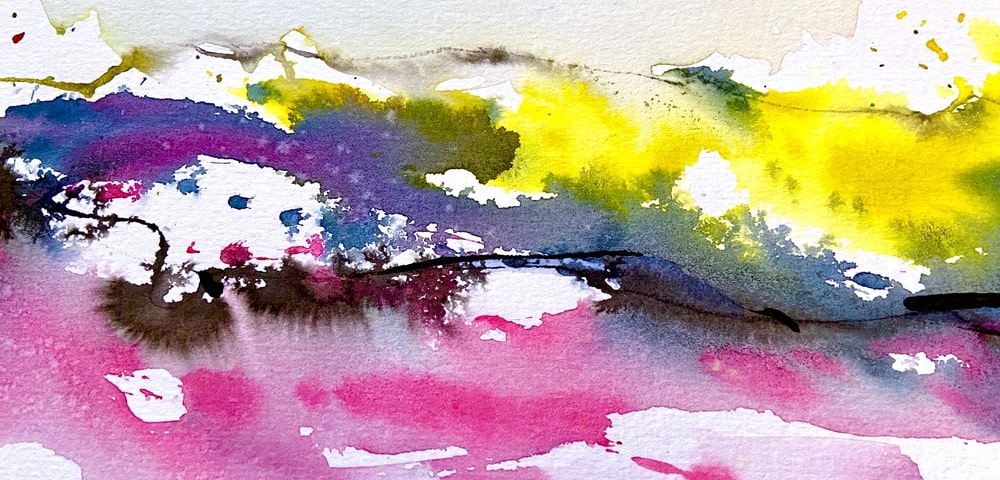
Ink can be an exciting addition to your drawing and painting practice. It’s easy to use and offers many options for experimenting with colours, shapes and textures. Here we will look at:
- Choosing inks
- Tools
- Ink and watercolours
- Ink and acrylic paint
- Coloured inks
- Urban sketching
- Tonal studies
- Creating texture
Choosing Inks
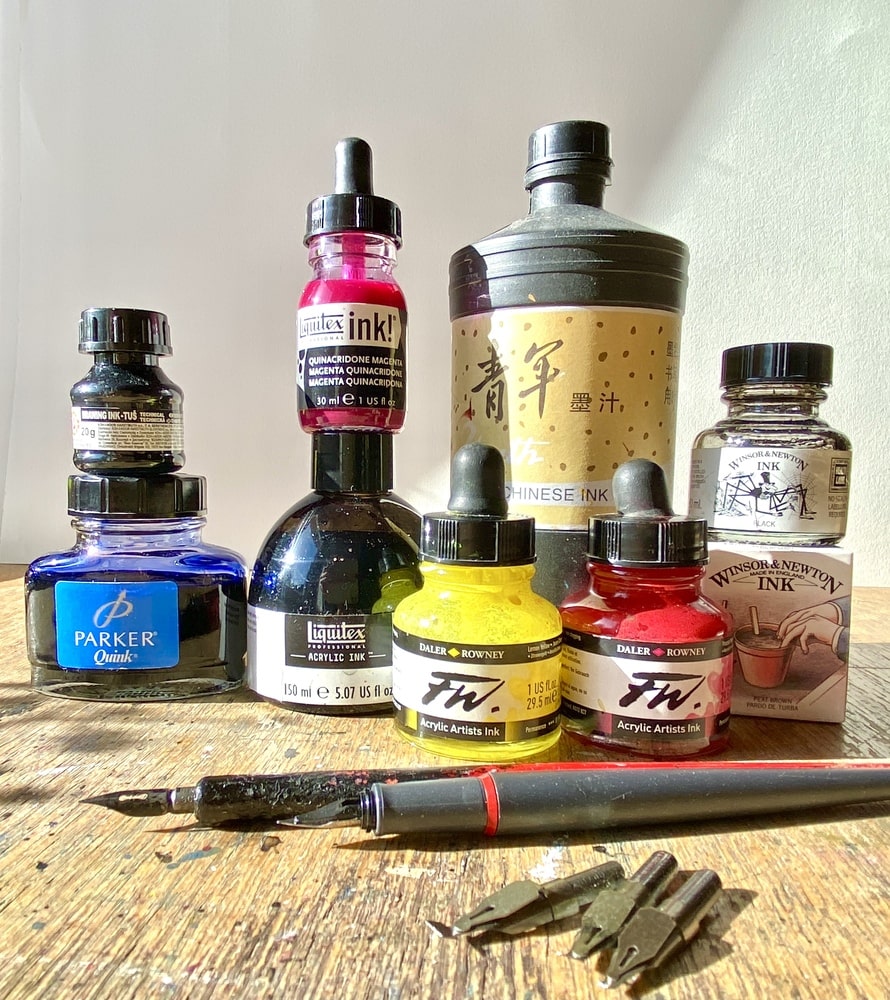
Inks come in many different forms depending on how you want to use it.
Pens holding ink, such as fine liners, fude pens and fountain pens are normally used for drawing and sketching. The main choices to make here are what pens you like to work with, and if the ink is waterproof or not.
For painting and artwork there is a vast assortment of black and coloured inks on the market. The base for making inks can be oil, alcohol, gum arabic or acrylic.
- Oil based inks are usually used for printmaking.
- Acrylic based inks are basically a very fluid paint, and is mixed with pigments. It is permanent and lightfast.
- Alcohol based inks are mixed with dye and can be diluted or reawakened with alcohol. They have strong colours but are less lightfast and do not mix well with other inks.
- Water based inks use binders such as gum arabic or shellac and do not always dry fully waterproof. Some artists make their own inks with local and found materials, often using gum arabic as a binder.
Colours in inks are either made from dyes or pigments. Dye based inks have good colours but are less permanent, and the pigmented acrylic inks are more lightfast.
For painting I prefer to use acrylic based inks. They are easy to use, pigment based and thus lightfast, and dries permanent. All acrylic inks are intermixable regardless of brand name.
Tools
Brushes, bamboo pens, twigs, spatulas and dip pens all work well with ink, as well as any other tools you might like to try.
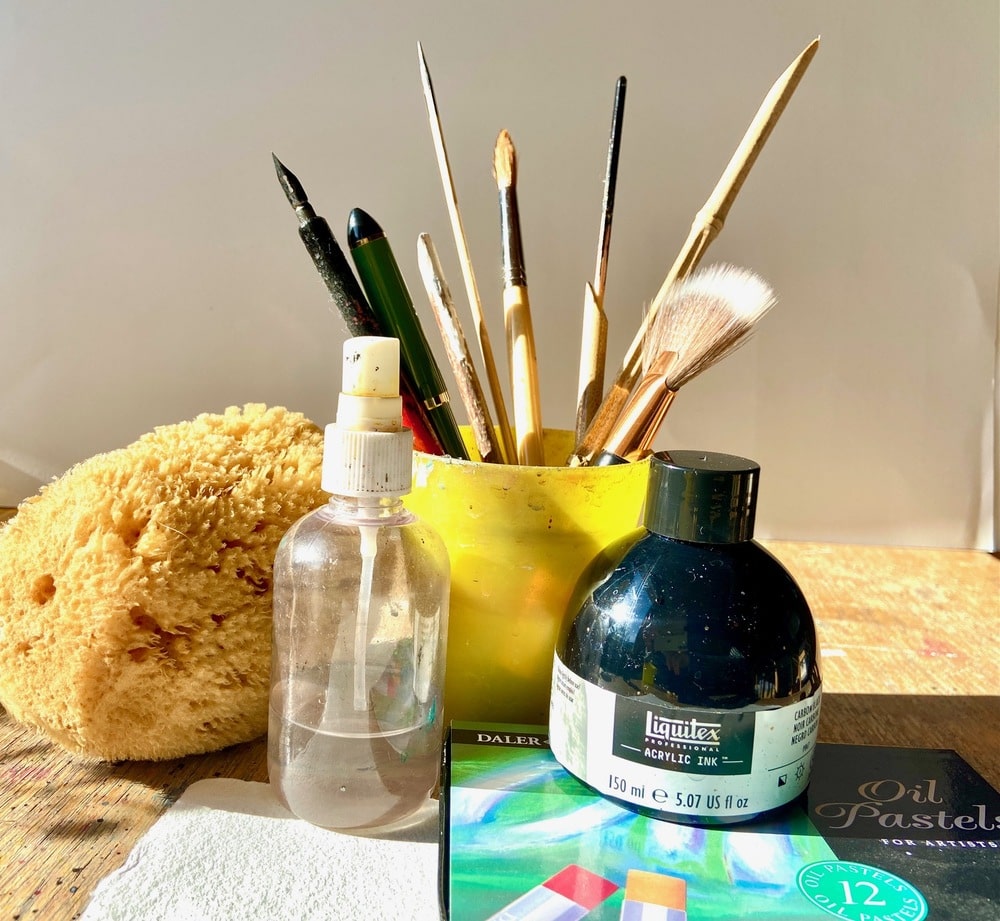
Mixing Ink and Watercolours
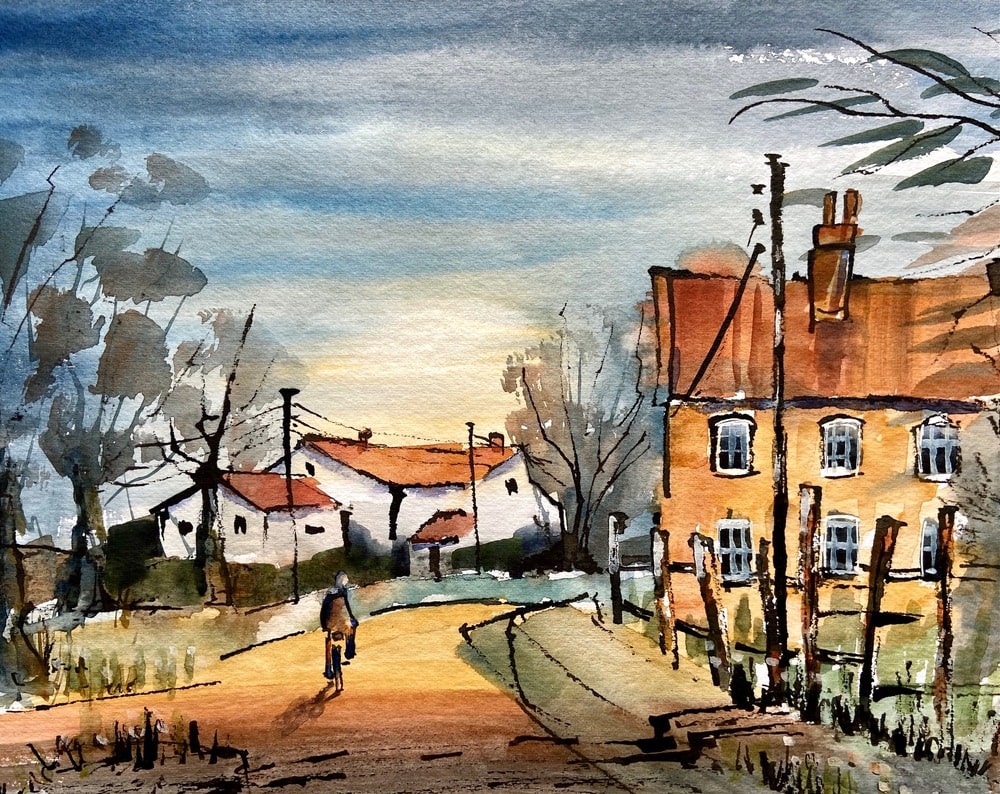
Combining ink and watercolours can be a very creative process.
Traditionally ink and watercolour describe a combination of drawing with a pen and then painting with watercolour, sometimes in a loose style. However, if you like stronger lines, try using a bamboo stick or twig and a bottle of fluid ink to draw with, and combine this with watercolours in any number of ways:
Draw with ink and immediately paint with watercolours, wet in wet style. This can create an unpredictable and interesting combination of colours and texture as they react with each other.
Draw an image with ink and wait until it’s dry before painting, resulting in strong lines.
Paint your watercolour image first and draw with ink to sharpen your marks and your focus.
If you spray the ink while it’s still wet, the line separates into lovely marks depending on the texture of paper you use.
Once your image is dry, you can build layers to this process by adding more ink or more watercolours until you are happy. You can also go in with fine liners or dip pens, in order to add more details.
Mixing Ink and Acrylic Paint
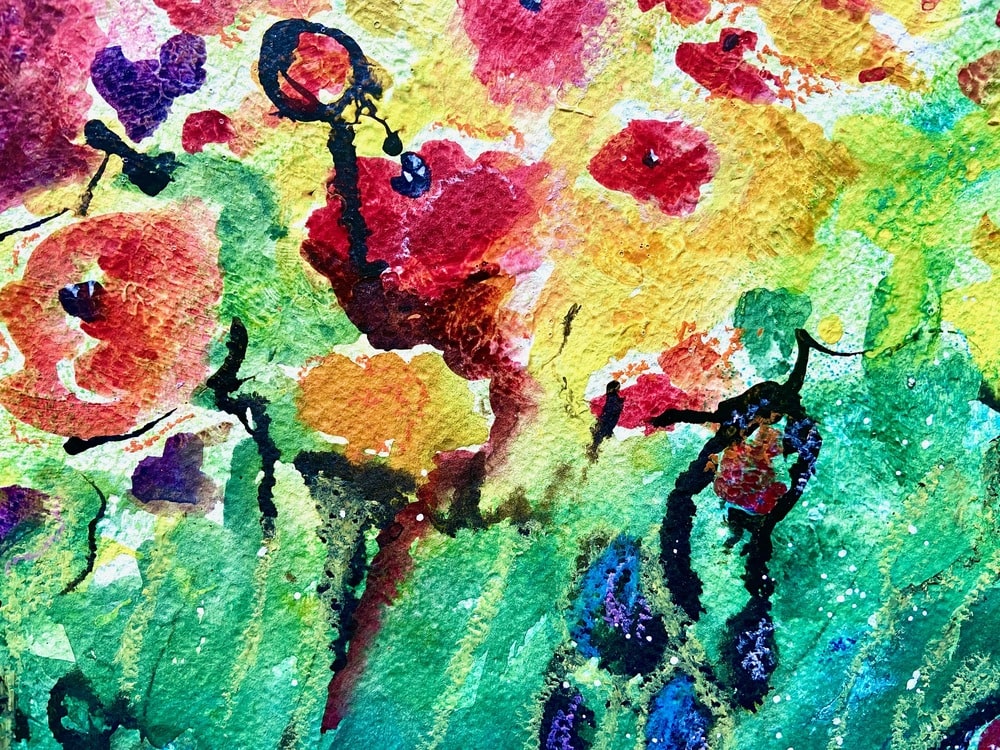
Ink works well with acrylics, especially if you choose an acrylic based ink. The acrylic paint is thicker in consistency but both ink and paint can be diluted with water and mixed or used in a layering effect.
Coloured Inks
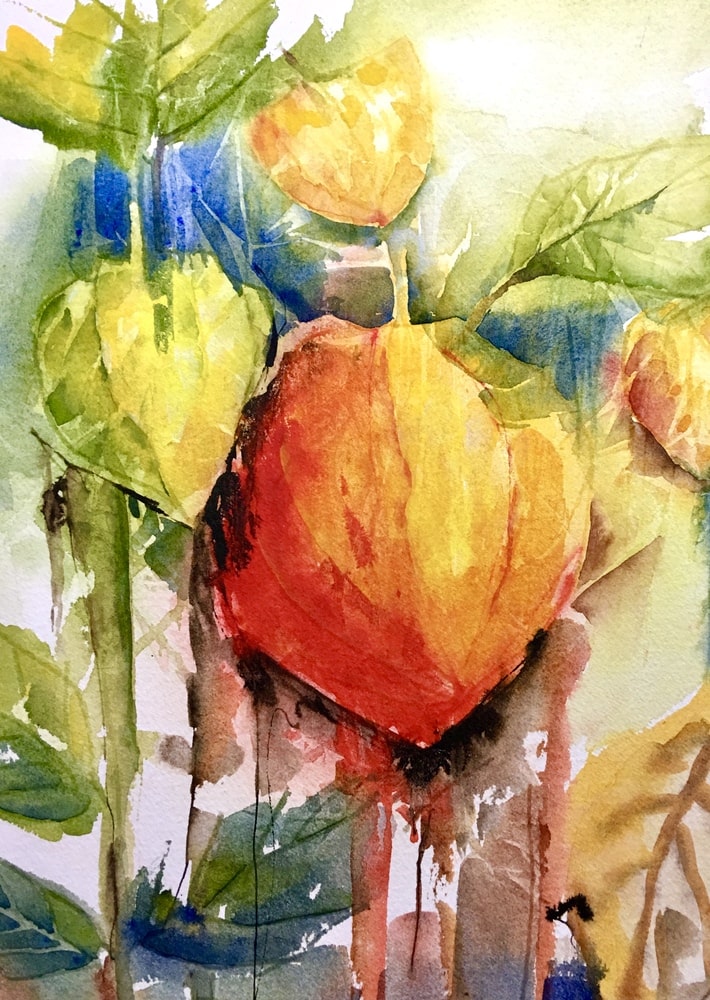
Good quality coloured inks have a consistency and strength of colour that’s unique. Painting with pure ink colours is in some ways similar to painting with watercolours. Using dip pens, sticks and brushes, we can work with layers of ink in much the same way as with watercolours. However, unlike watercolours once an acrylic based ink is dry, it’s permanent.
Urban Sketching
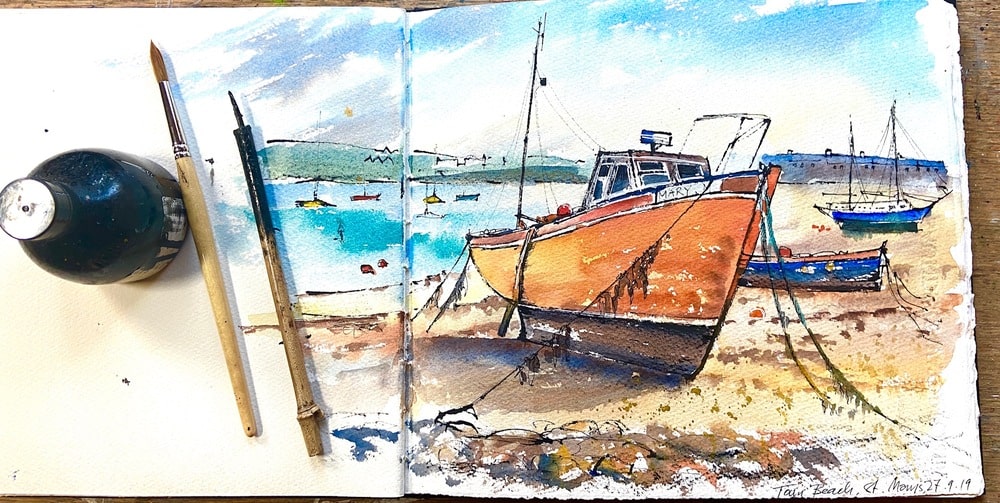
Sketching on location is becoming increasingly popular. As well as your usual pens and watercolours, try bringing a bottle of ink, a bamboo stick or sharpened twig and a little spray bottle along for some interesting lines and strong marks.
Tonal Studies
Ink can be a great medium for working out tonal studies as a preparation for larger artwork. In this example I have used black ink and a bamboo stick for drawing my composition. I then take a brush and dilute some ink with water to achieve a mid tone, which I paint, making sure I reserve some white. Once dry, I paint the darker areas.
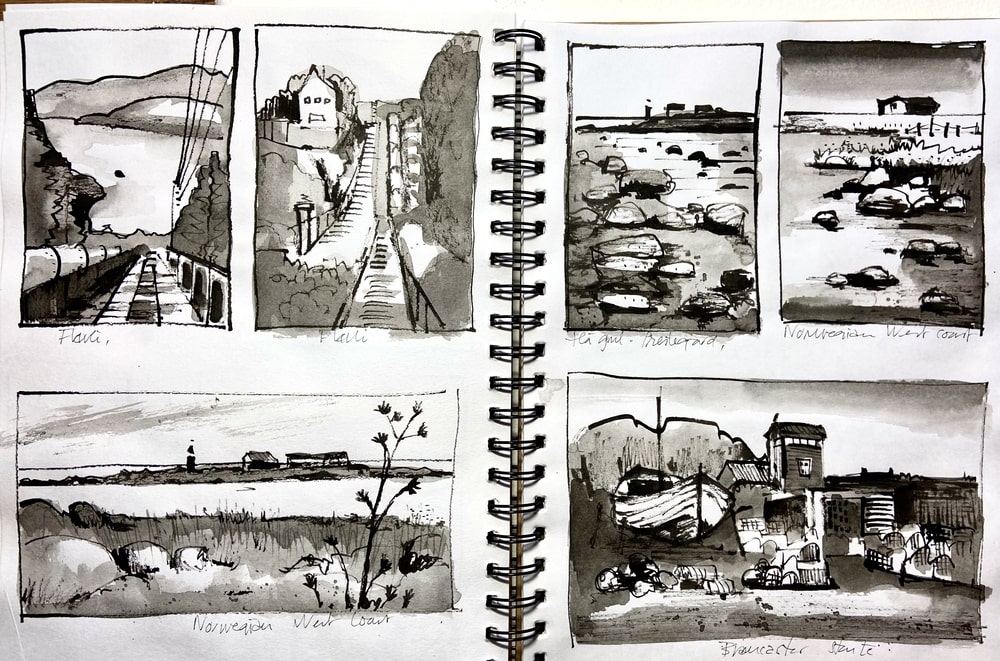
Left with only three tones helps me decide on my light and dark areas before committing to larger work.
Creating Texture
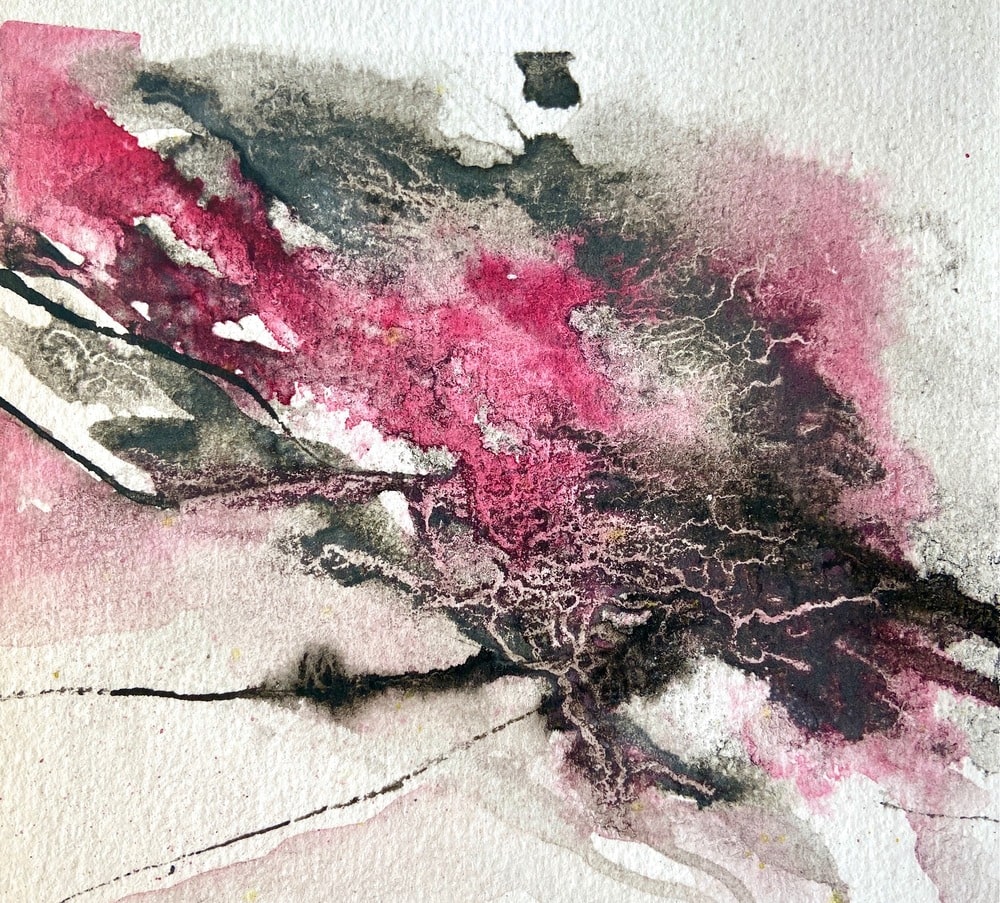
Playing and experimenting with ink and mark making can be great fun. Sprinkle some salt on, dab with a sponge, paint on gesso or other surfaces to achieve texture, or use in mixed media with pastels, crayons or collage. And spraying into the mix can be both scary and give surprising results. Basically, play and see what happens…
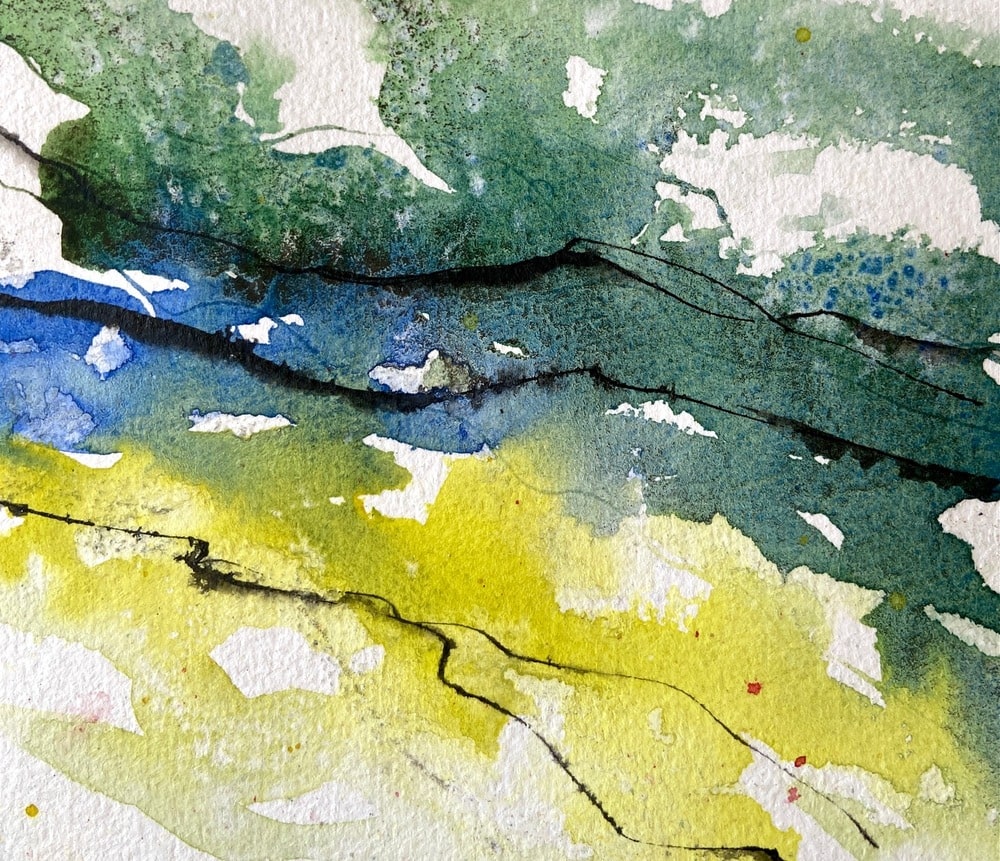


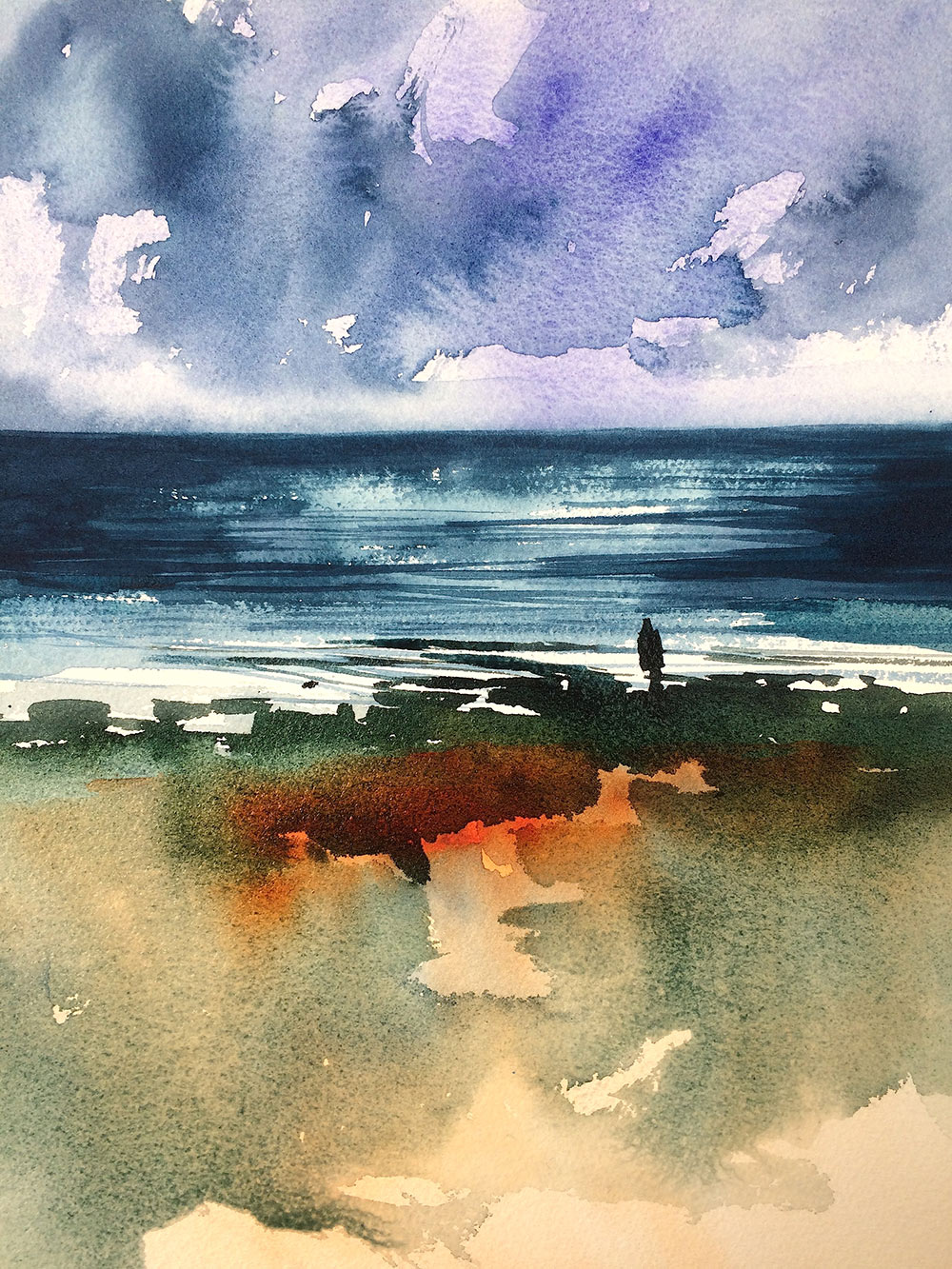
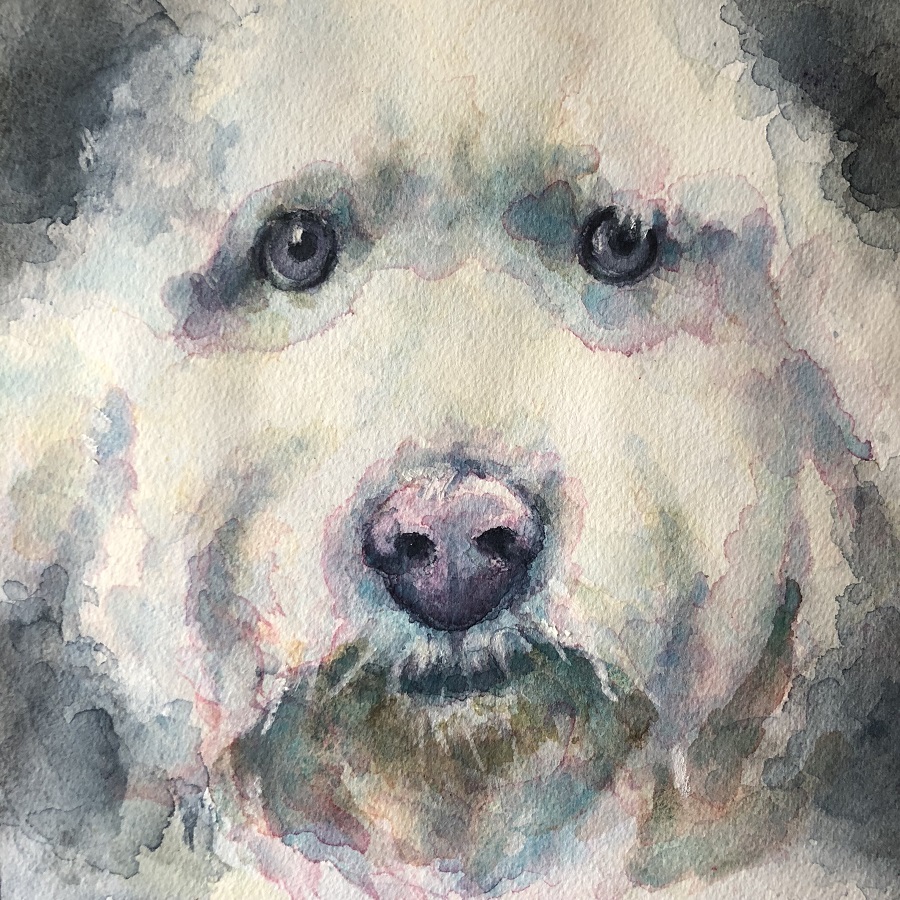
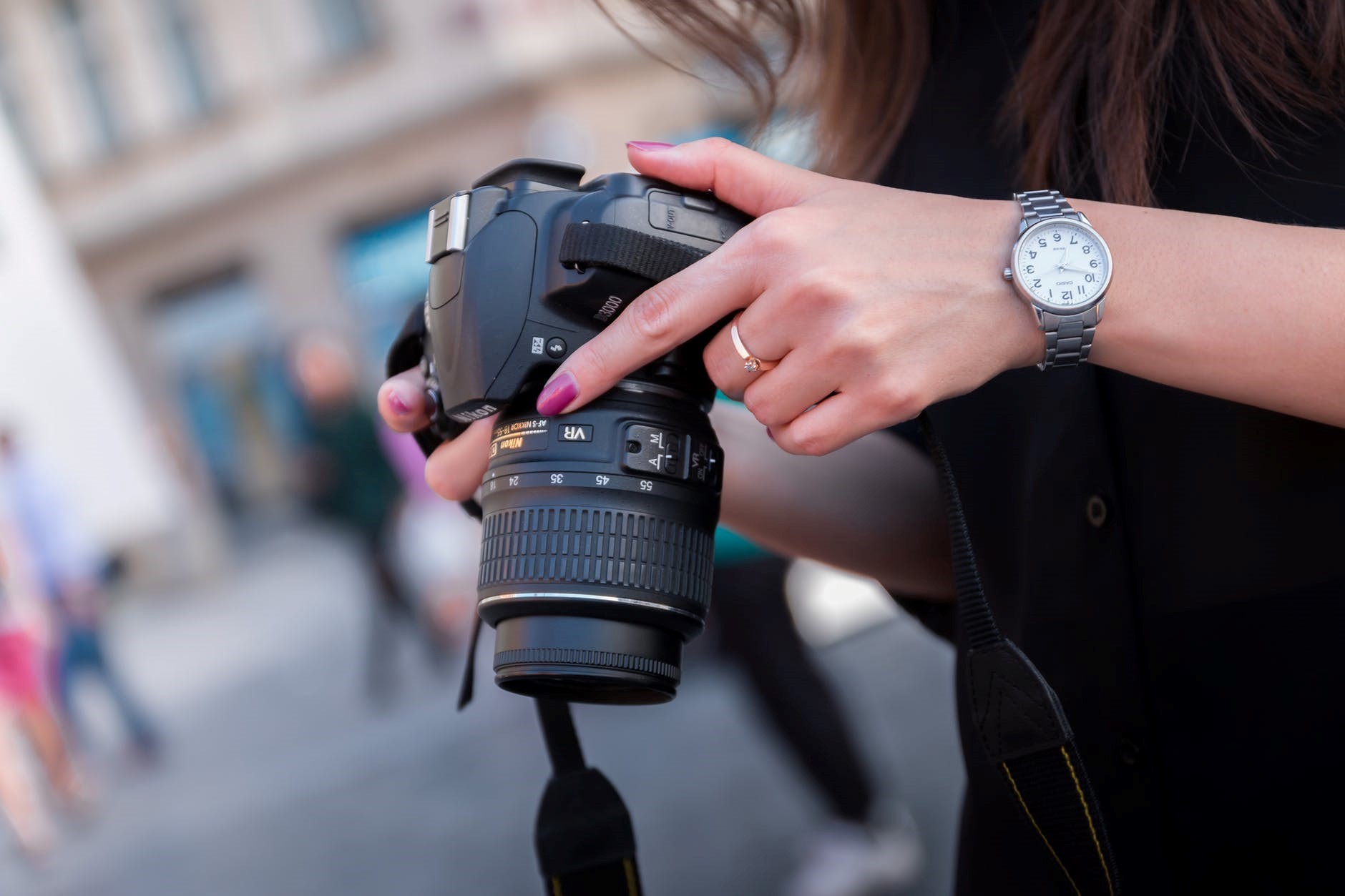
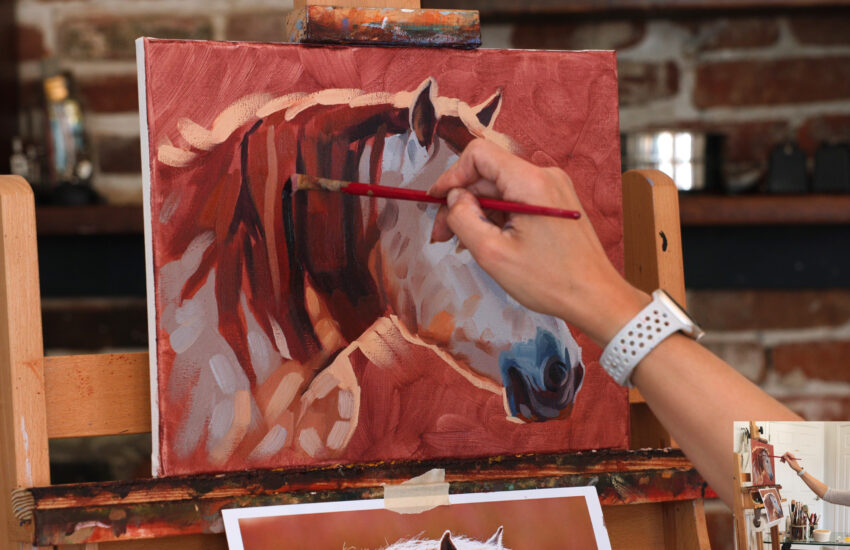
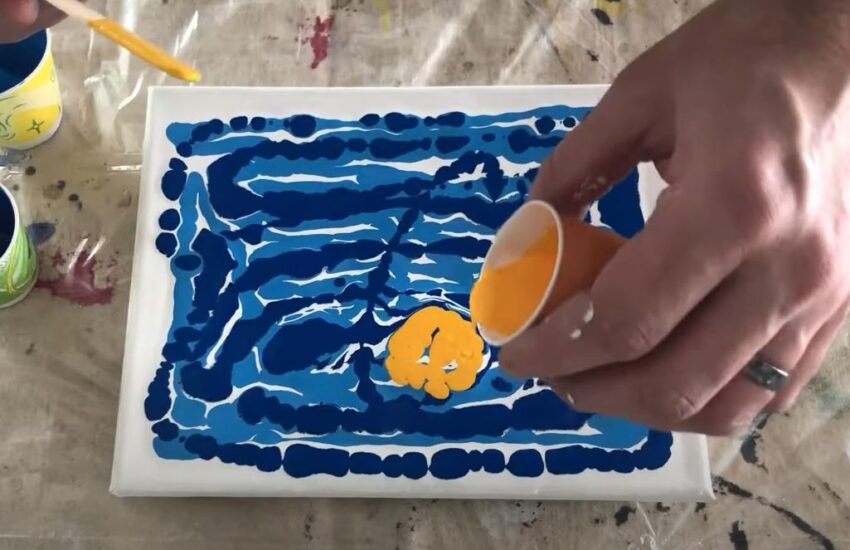
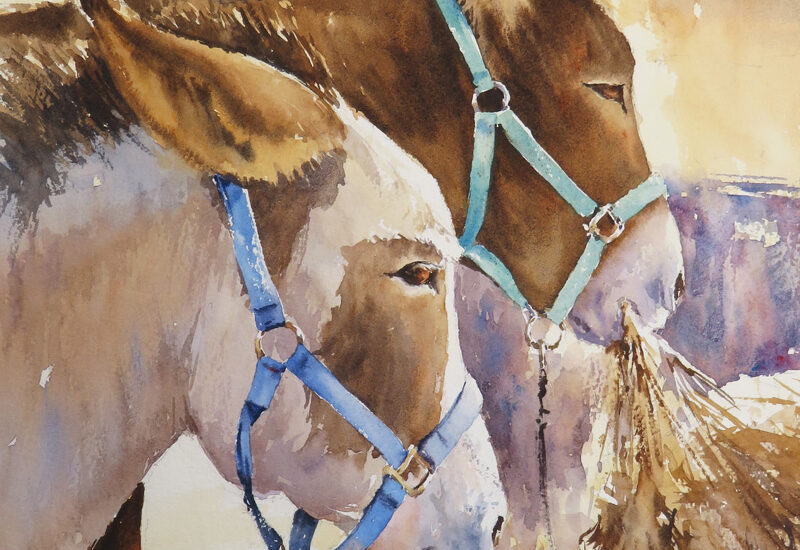


There were some inspiring ideas here, especially spraying to see what happens. (There are lovely waterproof sketching inks available, in a range of colours. These can be used with sticks and feathers, for instance, or in fountain pens, but should not be left in them too long, as they can log up the pen/nib). I don’t know if Bromley stock waterproof sketch inks?)
What’s the difference between Windsor and Newton coloured inks and acrylic inks?
Hi Rachael. Acrylic Inks are made using a fluid acrylic binder, similar to the ones you’d find in Acrylic Paints. This binder makes them fast drying and waterproof once dry. They’re also made using lightfast pigments, rather than non-lightfast dyes. Winsor & Newton offer two types of ink; Drawing Inks & Calligraphy Inks. Drawing Inks are made with a shellac binder which make them quick drying and water resistant once dry. However they are dye-based, so offer poorer lightfastness than a pigment based ink. Winsor & Newton Calligraphy Inks, on the other hand, are pigment based so boast better lightfastness. However, they aren’t water-resistant so will smudge and reactivate if you accidentally wet them. Hope this helps.
Thank you:)
love this tutorial i don’t use inks enough but I will try some of these techniques
Very informative. Thank you very much, I now feel more confident to add ink as I had been considering doing.
so what’s the best ink fo urban sketching, or are pens best.
Hi Dave. Pens are generally a little easier to transport and use for urban sketching. All our fineliner pens are very popular for drawing outdoors and most create crisp clear linework that is waterproof. Something like the Pentel Brush Pen could be used to so you benefit from the portability of a pen with the versatility of brush strokes and ink. There’s nothing stopping you from carrying around small bottles of ink along with brushes and dip pens though. If you’re looking for more information about pens we do have a couple of posts you might find helpful – Get to know Artists Pens – Fineliners & Technical Pens (a guide to our fineliner pens) and An Introduction to Line and Wash (goes into more detail about line and wash/pen and ink techniques popular with urban sketchers)
Thank you Karin. Now I know which ink I need.
Thank you so much. Very informative. I was just thinking of starting in ink and now I know exactly which ink I need.
That’s great news Patricia – glad you found Karin’s blog post helpful!
Thank you – what a great tutorial! Everything we need to know about inks. I love the texture inks add to my watercolour paintings.
So happy to hear you found Karin’s blog post helpful Linda!
Isn’t it ok to use a pencil to begin ?
Hi Tony. Thanks for your comment. You can certainly begin your work in pencil if you want. This will allow you to work and rework your ideas until you’re ready to add ink. You can go straight to using ink, but you’ll have to work with confidence and remember it’s much more difficult to correct any mistakes.
I’ve found this essence very important in my beginning. Appreciate the effort and help.